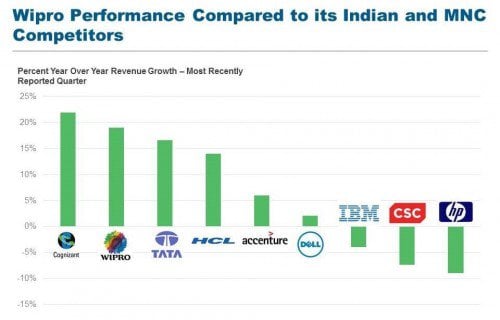January 19, 2012
Most enterprise cloud offering conversations to date have focused on the horizontal benefits…flexibility, scalability, auto scaling, cost savings, reliability, security, self provisioning, etc.
Advantageous as these are, CIOs are increasingly interested in learning more about cloud benefits that are specific to the industry in which their organizations operate. For example, latency requirements, failover mechanism and data encryption are important to a CIO in the financial industry. A healthcare industry IT executive will be interested in hearing more about mobility and data archiving. How the cloud can improve supply chain or logistics is important for a CIO in manufacturing industry. And a media industry IT executive, quite aware of the various platforms being used to access content, will want to hear more about Content Delivery Networks (CDN) supported by the cloud.
A growing number of enterprise cloud providers are beginning to understand this interest in vertical cloud benefits. While their focus has been on “SaaS-i-fying” their offerings to meet unique, industry-specific application requirements, the trend will continue towards “PaaS-i-fying” and even “IaaS-i-fying” their offerings.
Let’s take a quick look at some of today’s verticalized enterprise cloud offerings.
IBM’s Federal Community Cloud is dynamic and scalable to meet government organizations’ consolidation policies as mandated by the Obama administration’s CIO. It is in the process of obtaining FedRAMP certification to meet Federal Information Security Management Act (FISMA) compliance standards, a requirement for government IT contractors, and will be operated and maintained in accordance with federal security guidelines.
Savvis provides customized IaaS solutions that cater to the financial industry. Growth in this vertical has been led by providing infrastructure services – such as proximity hosting and low latency networks – which support electronic trading. Savvis has added six new trading venues and an international market data provider. Its customers can now cross-connect, or have network access, to over 59 exchanges, Electronic Communication Networks (ECNs), and market data providers. For example, it hosts Barclays Capital’s dark liquidity crossing network, LX, which aggregates its global client bases’ market structure investments.
Infosys took advantage of Microsoft Azure PaaS platform and its SQL Data Services (SDS) to provide automotive dealers with cloud-based solutions to go from a point-to-point dealer connection for inventory management to a hub-based approach. In this solution, an inventory database for all dealers is hosted at a dedicated instance of SDSin the cloud. It provides middle tier code and business logic to integrate data between participating parties and a web-based interface for dealer employees wanting to check inventory at other dealerships.
Amazon Web Services (AWS) has cloud solutions that cater to the media industry’s needs for transcoding, analytics, rendering, and digital asset management. It developed a CDN, based on CloudFront™, which provides the streaming from edge nodes strategically located throughout the United States for a robust streaming experience.
AWS’ Gov Cloud™ provides a cloud computing platform that meets the federal security compliances FISMA, PCI, DCC and ISO 27001. The Department of State and its prime contractor, MetroStar Systems, built an online video contest platform to encourage discussion and participation around cultural topics, and to promote membership in its ExchangesConnect network. The contest drew participants from more than 160 countries and took advantage of AWS for scalability. AWS hosts websites for many federal agencies such as the Recovery Accountability and Transparency Board (recovery.gov) and the U.S. Department of Treasury (treasury.gov). AWS provides multiple failover locations within the United States, a provision which meets the security requirement that only people physically located within the United States have access the data.
Game hosting companies are running their games in the cloud for faster delivery and scalability. And AWS’ S3 platform provides the storage capacities for gaming companies such as Zynga and Playfish.
GNAX’s healthcare cloud specifically caters to the healthcare industry and understands the nuances of HIPPA. It provides a private cloud solution to healthcare companies that scales up and down depending on patient volume.
Of course, there are both pros and cons to adopting vertical-specific cloud offerings.
Pros:
- Customized solutions based on industry regulations
- Immediate creation of competitive advantage
Cons:
- Vendor lock-in
- Proprietary workloads may not be migrated
These issues can be mitigated through a careful sourcing methodology, now being provided through cloud agents who negotiate the contracts with multiple vendors as per the needs of the client organization.
As illustrated above, there are significant benefits to be gained from industry-specific cloud solutions, and I predict we’ll see an increasing number of them emerging in the near-term.


